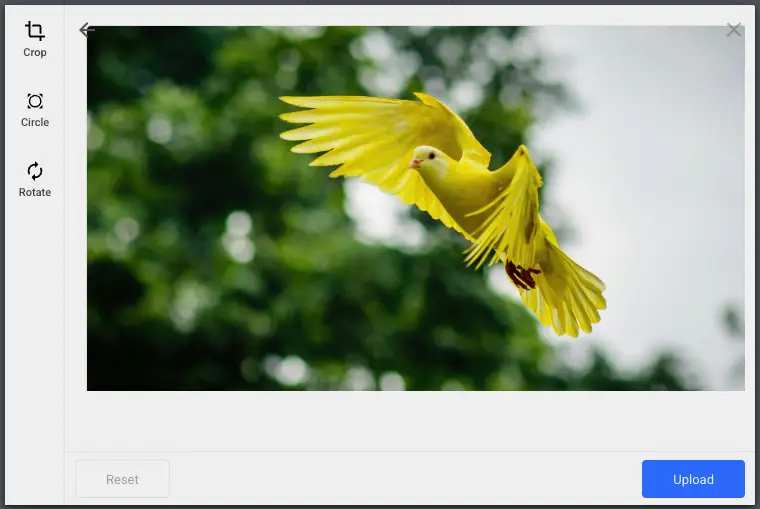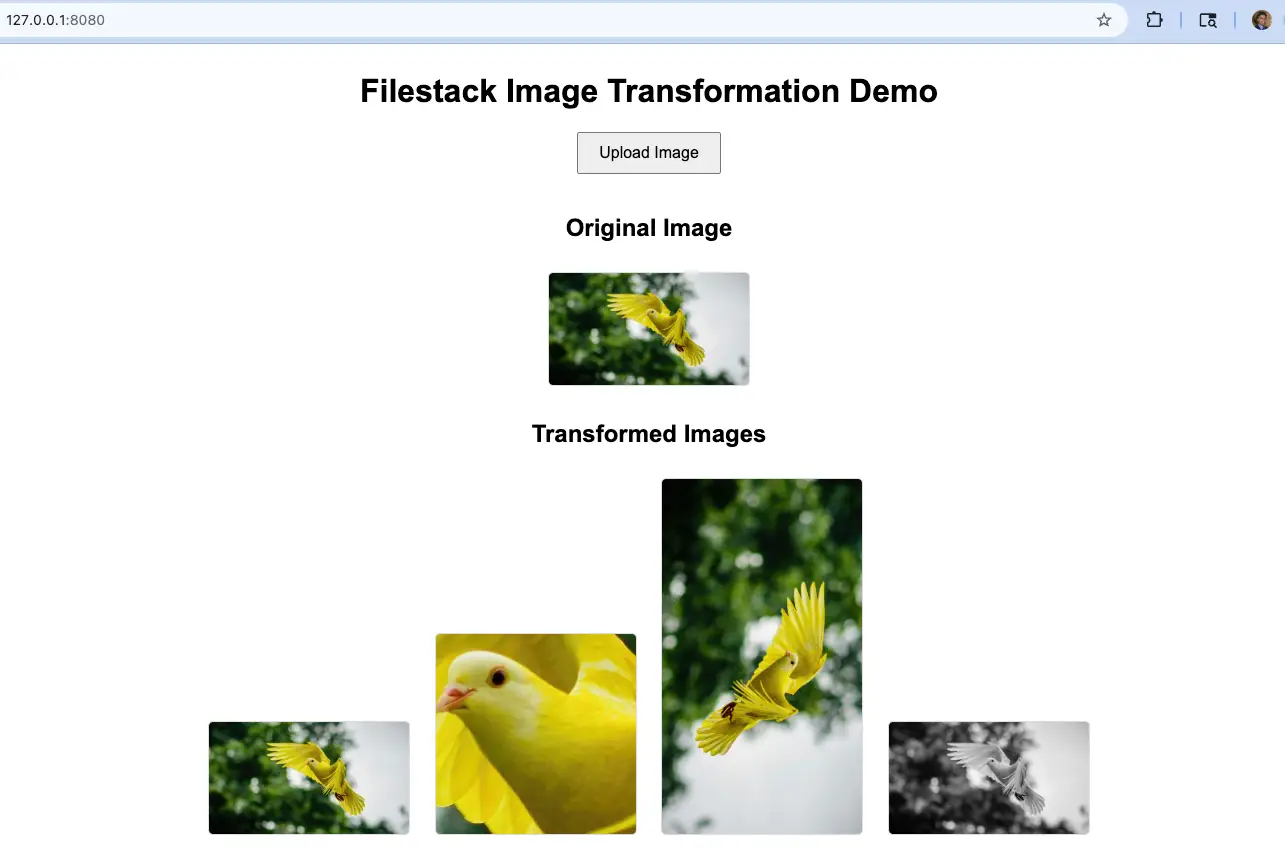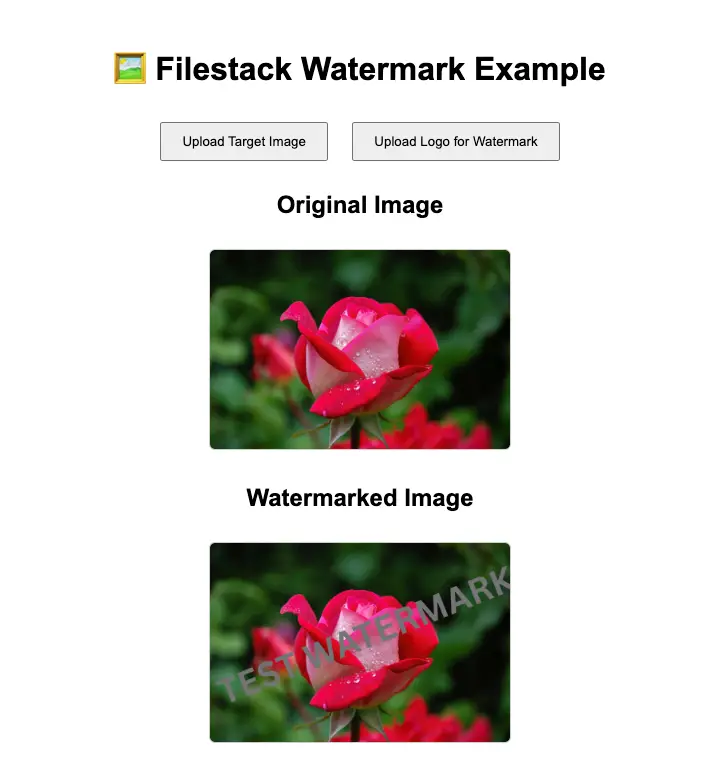Visual content serves as a functional element, identity marker, and user experience component in modern applications. Users expect applications to deliver fast and seamless visual interactions when they use social platforms, e-commerce storefronts, or creative tools.
An image hosting API functions as a file upload and image management platform, cloud storage, and maintains media organization. The same API system offers capabilities that extend beyond its typical storage functions.
This article explores functions that go beyond standard storage capabilities. The article reveals seven innovative uses of image hosting APIs, which include real-time transformation capabilities, automatic thumbnail generation, augmented reality (AR) filter creation, and collaborative board functionality. These backend features operate as essential frontline tools that developers use to create immersive, user-friendly experiences.
Let’s dive into the possibilities you might be overlooking.
Key takeaways
- Image hosting APIs do more than store files—they unlock creative, user-focused features for modern apps.
- Enable real-time image transformations like resizing, cropping, and filtering with just a few API calls.
- Boost performance and UX by auto-generating thumbnails and serving optimized images across devices.
- Build collaborative and interactive experiences through image boards, AR filters, and tag-enabled galleries.
- Integrate automation and AI to streamline watermarking, branding, and content moderation workflows.
1. Real-time image transformations on the fly
Modern image hosting APIs enable developers to execute transformations instantly when images are uploaded or requested, thus eliminating manual editing and batch processing delays.
These APIs enable real-time resizing, cropping, rotation, and filter application through a few API calls. They perform all image transformations, including sharpening, format conversion, and brightness and contrast adjustment, without modifying your original file in the background.
This technology provides great value to applications that need visual customization features. Profile editors that let users change their avatar dimensions and e-commerce sites that require product image optimization for mobile and desktop, and high-resolution displays can benefit from this technology.
Your application provides a faster personalized experience to users while reducing storage costs and development expenses through on-the-fly image transformations.
Image hosting APIs function beyond file delivery because they transform images according to user requirements in real time.
Filestack demonstrates its cloud-based photo manipulation API’s ability to perform real-time transformations at scale through its documentation.
Filestack real-time image transformation example
This example shows how to implement file upload and real-time image transformation with the Filestack image hosting API.
<button onclick="openPicker()">Upload Image</button>
<h2>Original Image</h2>
<img id="preview" alt="Original Image" />
<h2>Transformed Images</h2>
<img id="resize" alt="Resized Image" />
<img id="crop" alt="Cropped Image" />
<img id="rotate" alt="Rotated Image" />
<img id="filter" alt="Filtered Image" />
<script>
const client = filestack.init('YOUR_API_KEY'); // Replace with your API key
function openPicker() {
client.picker({
onUploadDone: (result) => {
const fileUrl = result.filesUploaded[0].url;
const fileHandle = result.filesUploaded[0].handle;
document.getElementById('preview').src = fileUrl;
// Apply transformations
document.getElementById('resize').src = `https://cdn.filestackcontent.com/resize=width:300/${fileHandle}`;
document.getElementById('crop').src = `https://cdn.filestackcontent.com/crop=dim:[1700,600,400,400]/${fileHandle}`;
document.getElementById('rotate').src = `https://cdn.filestackcontent.com/rotate=deg:90/${fileHandle}`;
document.getElementById('filter').src = `https://cdn.filestackcontent.com/monochrome/${fileHandle}`;
}
}).open();
}
</script>
Explanation of transformations
- /resize=width:300: Shrinks image width to 300px
- /crop=dim:[1700,600,400,400]: Crops 400×400px from position (1700, 600)
- /rotate=deg:90: Rotates the image 90°
- /monochrome: Applies a black-and-white filter
Replace ‘YOUR_API_KEY’ with your real Filestack API key.


Get the complete example from this GitHub repository.
Explore more in the Filestack documentation.
2. Auto-generating thumbnails for speed & aesthetics
High-resolution images appear beautiful, yet they cause performance issues and user frustration due to their slow loading times. Auto-generated thumbnails function as an intelligent optimization method to solve this problem.
The image hosting API enables you to produce responsive thumbnails that adapt to different devices and layout sizes. Your application can deliver the optimal image in every situation through its ability to serve thumbnails in various sizes, regardless of the page loading speed.
This is especially valuable for apps with media galleries, user feeds, or blogs where dozens (or hundreds) of images may load at once. The implementation of thumbnails enhances page speed and SEO while producing a more professional visual experience.
For example, using a service like Filestack, you can create multiple thumbnail sizes with simple URL parameters:
https://cdn.filestackcontent.com/resize=width:200/your_file_handle
https://cdn.filestackcontent.com/resize=width:400/your_file_handle
This eliminates the need to store multiple versions manually or perform server-side cropping.
3. Building collaborative image boards
Today’s users expect more than just uploading and viewing images—they want to engage with content, especially in creative or team-based apps. An image hosting API can enable this interactivity by supporting real-time collaboration on image boards.
Imagine letting multiple users upload, comment, react to, and organize images in a shared space. Whether it’s a team planning a product launch with visual mood boards, artists co-creating digital collages, or a classroom building a gallery of projects, collaborative image boards spark creativity and connection.
The image hosting API maintains live and consistent updates of stored images through cloud storage, which allows all users to access the same content. Real-time syncing frameworks such as Firebase or Socket.IO enable your static image display to transform into a dynamic, community-driven feature.
This isn’t just for designers—use cases range from brand teams to social platforms and education tools.
Pro tip: Pair Filestack with tools to upload, transform, and moderate images to build a robust, collaborative image workflow.
Here’s a simple example of how you could implement a collaborative image board using Filestack + Firebase. This isn’t a full production app, but it illustrates the core concept of letting multiple users upload images that sync in real time using an image hosting API.
Collaborative image board example with Filestack + Firebase
What you’ll need:
- Filestack API Key
- Firebase Realtime Database
- HTML + JavaScript
Step 1: Set up Filestack upload
<script src="https://static.filestackapi.com/filestack-js/3.x.x/filestack.min.js"></script>
<script>
const client = filestack.init('YOUR_API_KEY');
function uploadImage() {
client.picker({
onUploadDone: (result) => {
const fileUrl = result.filesUploaded[0].url;
// Save image URL to Firebase
firebase.database().ref('images').push({
url: fileUrl,
uploadedAt: Date.now()
});
}
}).open();
}
</script>
<button onclick="uploadImage()">Upload Image</button>Step 2: Display real-time images with Firebase
<div id="imageBoard"></div>
<script>
const imageBoard = document.getElementById('imageBoard');
const imagesRef = firebase.database().ref('images');
imagesRef.on('child_added', (snapshot) => {
const data = snapshot.val();
const img = document.createElement('img');
img.src = data.url;
img.style.maxWidth = '200px';
img.style.margin = '10px';
imageBoard.appendChild(img);
});
</script>
What this does:
- Users click the Upload button to upload an image via Filestack.
- The uploaded image’s URL is stored in Firebase.
- As soon as a new image is added, all connected users see it appear instantly, creating a real-time, shared image board.
Optional add-ons:
- Add comments: store comment, username, and imageId in Firebase
- Add reactions: thumbs-up or emoji support
- Use Filestack transformations for thumbnail previews before full-size view
4. Enabling augmented reality (AR) filters with hosted assets
AR filters have become a must-have feature in apps—from enhancing selfies to enabling virtual product try-ons. But to keep these experiences smooth and scalable, your app needs a fast and reliable way to deliver AR assets like masks, textures, and overlays.
This is where an image hosting API shines.
Instead of bundling heavy asset files directly into your app or storing them on a slow server, you can host AR files (like transparent PNGs or 3D textures) in the cloud and serve them instantly through API endpoints. Filestack, for example, allows you to store and deliver assets with CDN-level speed and real-time transformation support.
Imagine a selfie app where users can swipe through masks. Each time a filter is selected, the app fetches the overlay from the cloud using a lightweight API call. Or a retail app offering virtual try-ons—shoppers can preview glasses, hats, or makeup in real-time using camera-based AR with remotely served assets.

The result? A more responsive, lightweight app that scales well across regions and platforms—without sacrificing quality or performance.
5. Watermarking & branding automation
Brand identity matters—especially when your images are shared across the web, social platforms, and third-party sites. With an image hosting API, you can automate adding logos, copyright text, or custom overlay filters without manual editing or third-party tools.
This is incredibly useful for photographers protecting their work, ecommerce sellers wanting consistent branding, or content-heavy apps where thousands of user-uploaded images need to be processed at scale.
For example, with Filestack, you can apply a watermark on the fly by chaining transformations to the image URL:
https://cdn.filestackcontent.com/watermark=file:your_logo_handle,size:250,position:[middle, center]/your_file_handleThis overlays your logo right at the center of the target image—all done in real-time, no editing software required.

Whether you want to add:
- A semi-transparent company logo
- A “preview only” banner
- Branded filters for a campaign
…you can do it programmatically and consistently with minimal effort.
Get the complete example from this GitHub repository.
Explore more in the Filestack documentation.
6. Content moderation before image publishing
When users upload content, trust and safety become a top priority—especially for social platforms, marketplaces, and community-driven apps. An image hosting API can be integrated with AI-powered moderation tools to automatically detect and block offensive, irrelevant, or inappropriate content before it ever goes live.
By combining an image hosting API like Filestack with a content moderation layer (such as Google Vision, AWS Rekognition, or Filestack’s own Safe For Work (SFW) filter), you can:
- Detect nudity, violence, or offensive symbols
- Flag spam or irrelevant uploads
- Enforce platform guidelines at scale
You can even enhance this with metadata tagging and visual recognition, allowing your app to:
- Automatically tag images with categories (e.g., “food”, “portrait”, “outdoor”)
- Recognize logos or faces (with user consent)
- Block or allow images based on predefined content rules
Here’s a simple example of applying moderation via Filestack’s SFW filter:
const client = filestack.init('YOUR_API_KEY'); // Replace with your actual Filestack API key
client.picker({
onUploadDone: res => {
const handle = res.filesUploaded[0].handle;
client.metadata(handle, { sfw: true }).then(metadata => {
if (metadata.sfw === false) {
alert('Content flagged as inappropriate.');
} else {
// Safe image — proceed to publish
}
});
}
}).open();
This automated workflow ensures that community standards are enforced without slowing down the user experience.
Want to see how this works in practice? Check out how Filestack provides tools to upload, transform, and moderate images seamlessly in modern apps.
7. Creating interactive image galleries with tagging & zoom
Flat, static galleries are a thing of the past. The modern user base demands interactive visual content, especially when using educational applications, product catalogs, or design portfolios. An image hosting API enables developers to construct interactive galleries that use real-time API calls to provide zoom functionality, tagging, and panning features.
You can deliver optimized thumbnails at first before loading high-resolution images when users request them. Users can inspect product details, artworks, and technical diagrams in detail through seamless zoom and pan interactions without experiencing lag.

The combination of image metadata with API-based overlays enables users to add tags to particular sections of images. For example:
- Highlight parts of a machine in an industrial training app
- Tag faces or locations in a photo archive
- Label ingredients in a cooking tutorial
The transformation of images into interactive platforms enables users to explore content while maintaining high levels of engagement and educational value.
A robust image hosting API together with this feature will produce a gallery that provides both excellent performance and visual appeal across different devices and network speeds.
Conclusion
An image hosting API plays a role beyond file uploading and storing tasks. It’s a creative engine that provides an interactive and intelligent visual experience across apps. We’ve explored the potential applications of these APIs that go far beyond the basic file upload and storage.
The right image hosting API is a flexible and powerful toolkit for developers to build smarter, faster, and a wide range of user-centric applications.
Whether you’re running an e-commerce platform, building a design collaboration tool, or adding AI moderation to user uploads, integrating a robust solution like Filestack can dramatically improve both the developer workflow and end-user experience.
In short, don’t treat your image hosting API as a passive backend feature—use it as a dynamic frontend enabler.
Ready to bring these ideas to life? Sign up for free today and explore what you can do with Filestack’s innovative image hosting API.
Shamal is a seasoned Software Consultant, Digital Marketing & SEO Strategist, and educator with extensive hands-on experience in the latest web technologies and development. He is also an accomplished blog orchestrator, author, and editor. Shamal holds an MBA from London Metropolitan University, a Graduate Diploma in IT from the British Computer Society, and a professional certification from the Australian Computer Society.
Read More →

